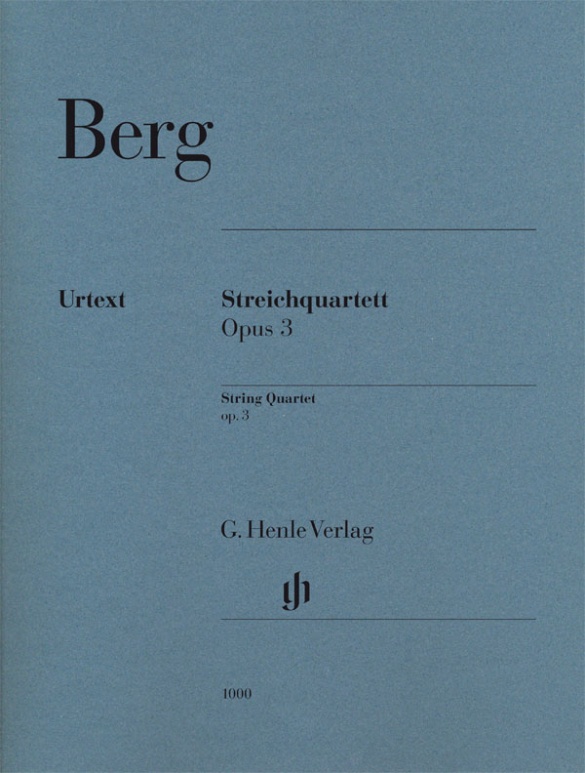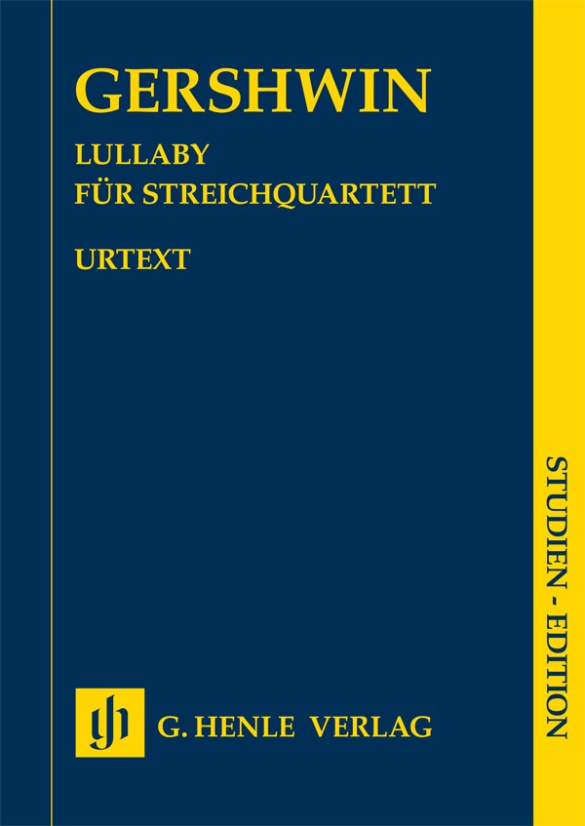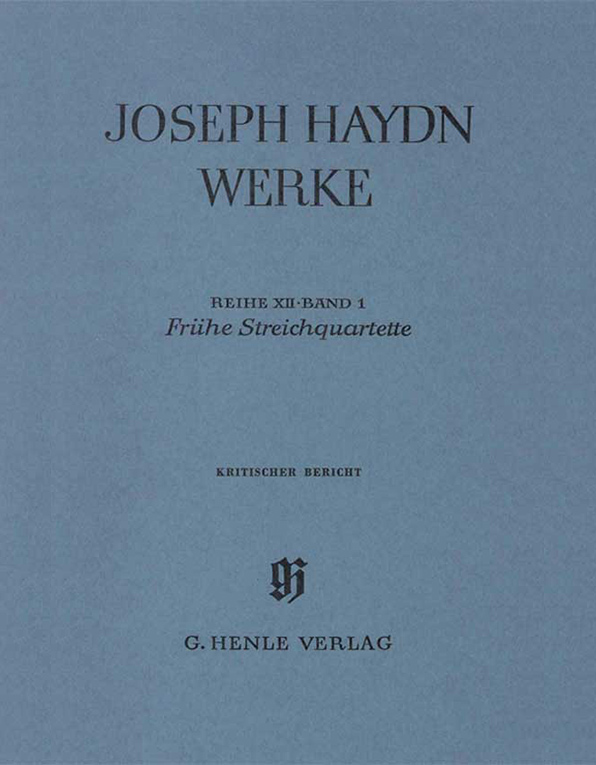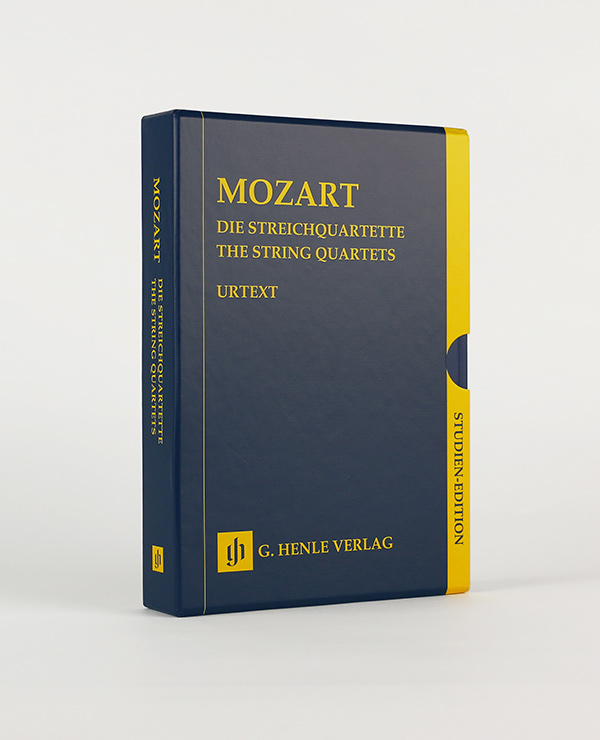Alban Berg
String Quartet op. 3
Alban Berg’s String Quartet can be considered to be one of the founding works of the Second Viennese School. Already composed in 1910 and first published in 1920, it was the last composition the 25-year-old wrote under the tutelage of Arnold Schoenberg, who admired “the fullness and unconstraint of his musical language, the strength and sureness of its presentation, its careful working and significant originality”. Even today the extremely complex work places the highest technical demands on the interpreters; for this reason our edition contains parts that are especially good to play from, in which each musician can also follow what is going on in the other parts. Numerous fold-out pages allow ideal page turns.
内容/詳細
作曲家について
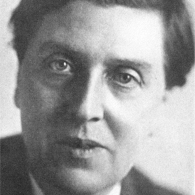
Alban Berg
Together with his teacher Schönberg and with Webern, he belongs to the Second Viennese School, which defined musical advancement through atonality and the twelve-tone technique. His modest oeuvre is explained not only by his early death, but also by his high aesthetic standard. His two operas Wozzeck and Lulu shaped twentieth-century music theatre. He also wrote essays on analytical and aesthetic matters.
| 1885 | Born in Vienna on February 9, the son of an art and book dealer. |
| from 1904 | Studies with Arnold Schönberg. |
| 1904–06 | Employment as an accountant. After coming into an inheritance, he relinquishes the position and dedicates himself to music. |
| 1905–08 | Seven Early Songs (orchestrated 1928). |
| 1909 | Sonata for piano, Op. 1, in one movement, in sonata-form. |
| 1909–10 | Four Songs for voice and piano, Op. 2, atonal with dense contrapuntal structure. |
| 1910 | String Quartet, Op. 3, with expressive tonal qualities. |
| 1912 | Five Orchestral Songs, texts from postcards from Peter Altenberg, Op. 4. Completes piano reduction of Schönberg’s Gurre-Lieder. |
| 1913 | Four Pieces for clarinet and piano, Op. 5. |
| 1913–15 | Three Pieces for Orchestra, Op. 6. |
| 1923–25 | Chamber Concerto for Piano and Violin with Thirteen Wind Instruments. |
| 1925 | Premiere in Berlin of his most famous opera, “Wozzeck,” considered an Expressionist work. |
| 1925–26 | Lyric Suite for string quartet, using twelve-tone technique. |
| 1929 | Concert aria “Der Wein” after Charles Baudelaire. |
| 1935 | Violin Concerto as a kind of “requiem” (dedicated “to the memory of an angel,” Manon Gropius). Dies in Vienna on December 23/24. |
| 1937 | Posthumous performance of the two acts of his unfinished opera “Lulu,” begun in 1927. |
製品安全に関する情報

G. Henle Verlag
製品の製造元に関する情報はこちらでご覧いただけます。G. Henle Verlag
Forstenrieder Allee 122
81476 München
info@henle.de
www.henle.com
Each part has been printed in score format with the individual part in larger typeface; the page turns have been carefully mapped out. Well done, Henle.
AUSTA Stringendo, 2017Der Henle Verlag ging jetzt noch einen Schritt weiter und hat neues Stimmenmaterial herausgegeben, bei dem jeder Spieler aus einer eigens für seine Stimme gefertigten Partitur spielt. Was für von Walter Levin beeinflussten Musiker ohnehin ein Muss ist, wird bei dieser hochkomplexen Partitur jeder Streicher dankbar begrüßen. Am Notenmaterial dürfte es also jetzt nicht mehr scheitern ...
ESTA-Nachrichten, 2016Spätestens wenn man Ullrich Scheidelers akribischen kritischen Bericht über die zur Erstellung der vorliegenden Urtextausgabe herangezogenen Quellen gelesen und sich mit den im Anschluss daran kommentierten Passagen der Partitur befasst hat, gelangt man zu der Erkenntnis, dass es wirklich höchste Zeit für eine Neuedition von Bergs Streichquartett gewesen ist. (...) Während die Stimmen früherer Ausgaben wichtige Stellen aus den übrigen Instrumentalparts lediglich durch Stichnoten referierten, hat man nun zur Erstellung von Spielpartituren gegriffen, in denen sich der aktuelle Part durch die Größe des Druckbilds von den übrigen, lediglich klein gedruckten Stimmen unterscheidet. Diese Lösung begünstigt es, den komplexen vierstimmigen Satz mit seinem differenzierten Geflecht an Haupt-, Neben- und Begleitstimmen zu durchschauen, was insbesondere für die Probenarbeit eine große Erleichterung darstellen dürfte.
Das Orchester, 2016L'op. 3 di Berg viene proposta da Henle Verlag, in Urtext, in un'impressionante edizione: ogni parte staccata presenta il rigo da suonare in evidenza, insieme alla partitura in caratteri minori, in modo da poter seguire tutte le voci.
Archi, 2016おすすめ
autogenerated_cross_selling
このタイトルを含む他の版


